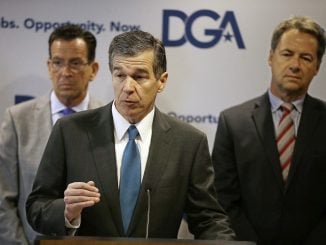One of the biggest hurdles we face a nation in our political life together is the lack of basic factual information. It is next to impossible to solve political problems when every single issue is prismed through the spin machines and war rooms on both sides and basic facts are obscured purely for political purposes.
Such is the case with Medicaid. Hardly anyone outside of the health industry knows anything about it.
Including many elected officials. A Republican health care expert in Washington recounted a debate prep session he had with a Republican presidential nominee. After three days of making no progress, he said to the candidate: “Just remember: Medicare is for old people. Medicaid is for poor people.”
The candidate’s eyes lit up as he fairly leaped out of his chair. “I got it!” he shouted and walked triumphantly out of the room.
Except the statement is not entirely true.
Medicare is for “old people” over the age of 65. FDR first adopted 65 for Social Security in 1935 based on the precedent of Otto von Bismarck using it as the retirement age for the German retirement plan in 1889. LBJ adopted it for Medicare in 1965.
Medicaid, however, is not available for every “poor” man or woman as commonly accepted. Medicaid covers women with infants or dependent children; aged, blind and disabled, and long-term nursing care.
People are surprised to learn that men of all races who are below or near the poverty level between the ages of 18 to 65 are not covered by Medicaid. Neither are childless women who are struggling.
In North Carolina, adults account for 231,000, only 11%, of the 2.1 million enrollees in Medicaid. Fifty-three percent of enrollees (1.1 million) are children; aged, blind and disabled people account for 21%, or 441,000, of the state’s Medicaid recipients.
Medicaid expansion is at the crux of the current budget impasse in North Carolina. Expansion would add up to 500,000 childless adults and other qualifiers to state Medicaid rolls. These are childless adults previously not eligible for Medicaid plus near–poverty level individuals or families who either have not bought or can’t afford the lowest cost ACA plan in the exchange.
The total cost of expansion for North Carolina is estimated to be $4 billion annually. Instead of being matched at the traditional 67% federal Medicaid match rate for women with children; aged, blind and disabled and nursing home care, every new recipient — childless adults mostly — would be matched at a 90% rate by the federal government as mandated under Obamacare. State taxpayers would pay $400 million more per year in the 10% match, but everyone would “pay” as interest and the federal debt keep going up due to increased federal participation.
North Carolina’s taxpayers currently pay 33% of the cost of Medicaid, or $4 billion per year, while federal taxpayers and foreign debt holders pay the other $11 billion. Medicaid accounts for $15 billion (32%) of the entire state budget.
As health care costs rise exponentially due to technology and utilization, (who would have ever thought hearts and lungs could ever be transplanted when Medicaid was adopted in 1965?), the costs of Medicaid and Medicare keep exploding and increasing deficits at the national level and squeezing out education, public safety and transportation budgets at the state level.
There are no simple answers to health care as Bernie Sanders and Elizabeth Warren want you to believe. Putting everyone on what would be essentially “Medicaid for All” will infuriate the 180 million Americans currently on company-sponsored plans to name just one example.
Having a robust debate on how best to extend coverage to all Americans is a good thing to do in a campaign year. Having the right facts to back up those arguments is crucial to finding the right answer.



